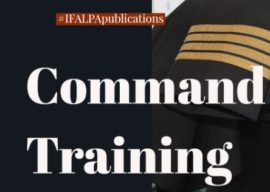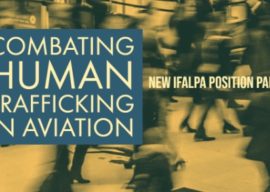
Briefing Leaflet: Ocular Hazards of UV Exposure
11 Decembre 2019 - Sunlight is a major source of UV radiation which can damage the delicate tissues of the eye. This briefing leaflet provides an overview of the risks of UV exposure in the cockpit and provides advice for pilots to protect their eyes.
Briefing Leaflet: Alcohol Information for Pilots
11 Decembre 2019 - The importance of not drinking alcohol in proximity to duty is well known among the pilot population. However, the consumption of alcohol poses risks to long term health which could have an impact on flight safety. This Briefing Leaflet expands upon and explains those risks, and provides recommendations for pilots.
Briefing Leaflet: Sleep Apnea Information for Pilots
11 Decembre 2019 - The prevalence of sleep apnea in adults is estimated to be 7%. In contrast, the US Federal Aviation Administration (FAA) records instances of sleep apnea in Class I medical certified pilots as only 0.5%. Sleep apnea seems to be badly under diagnosed within the pilot community. As sleep apnea results in daytime sleepiness, when left undiagnosed it can pose a significant safety risk in aviation.
Briefing Leaflet: Malaria Information for Pilots
11 Decembre 2019 - FMalaria is a common and life-threatening disease found in many tropical and subtropical countries. Malaria is transmitted to humans by the bite of an infected female anopheles mosquito. This Briefing Leaflet provides a summary of malaria risk, notes anti-malarial drugs suitable for pilots, and recommends protection measures for pilots to consider.
Position Paper IFALPA: Use of Transponder-Derived Data
11 décembre 2019 - The air transport industry is under constant pressure to increase airspace capacity and reduce separation minima without decreasing safety. One method to augment data derived by surveillance radar is Automatic Dependent Surveillance (ADS).
Safety Bulletin: Aircrews and Ionizing Radiation
11 Decembre 2019 - Flying exposes aircrew to ionizing and non-ionizing radiation. Non-ionizing radiation (e.g. UV-radiation exposure) is not addressed in this Briefing Leaflet. Ionizing radiation has enough energy to produce ions by pulling electrons from atoms and molecules. Ionizing radiation can be electromagnetic, such as x-rays and gamma-rays, or corpuscular, such as alpha particles, electrons, neutrons, protons, or heavyions.
Safety Bulletin: Suvarnabhumi International Airport (BKK)
16 Decembre 2019 - This reissued Operational Notice alerts airlines of the on-going risk to aircraft operations at BKK airport due to soft ground conditions affecting the taxiways, taxi lanes and aircraft stands. Soft ground conditions or “soft spots” have been encountered and reported by flight crews and ground service providers at BKK since at least 2008.
Position Paper IFALPA: Command Training
11 décembre 2019 - IFALPA has identified that there is a need across the industry to standardize and enhance command training. In the airline context, the Captain has final authority and final responsibility for the operation and safety of the flight; this requires specific training in the roles and responsibilities as well as enhanced knowledge, skills, and competencies associated with command.
Position Paper IFALPA: Combatting Human Trafficking In Aviation
11 décembre 2019 - Human trafficking (human trafficking, trafficking in persons, TIP, or trafficking in human beings), despitebeing a heinous crime and a violation of human rights, is becoming one of the most profitable and fastest growing black-market businesses. It also serves as an important source of revenue for terrorism. The cross-border issue is not restricted to large cities, but also affects smaller communities, rural areas, and tourist areas.
Safety Bulletin: IATA In-Flight Broadcast Procedure (IFBP) AFI Region
10 Decembre 2019 - This IATA Operations Notice replaces 14SAB004 - IATA In-flight Broadcast Procedure (IFBP) Revision 7, in total.






